Herzl Camp
Herzl Camp
In its first brochure, Herzl Camp’s aim was “to bring a child closer to Jewish life and the Jewish people… to prepare the child to absorb the content and values of modern Palestine… to enlist the child’s interest and help in building of the Jewish national homeland.” In its first year, camp sessions were offered for children ages 12 and above. From the beginning, athletics, waterfront activities, recreation, music, dancing, cultural and creative events were all components of the Herzl experience.
The site on Devil’s Lake in Webster, Wisconsin had The Log Cabin Inn, ironically a “gentiles only” establishment, which became the home of Herzl Camp. The farmhouse was converted into a dining hall and kitchen. One of the larger fishing cabins became an activities building and a minimum of additional plumbing was added to make the site accessible to campers.
368 miles southeast of Hibbing almost as far as Madison, Wisconsin.
Video - Herzl Camp Tour
Jewish Virtual Library - Theodor (Binyamin Ze’ev) Herzl
_________________________________________________________________________________________________
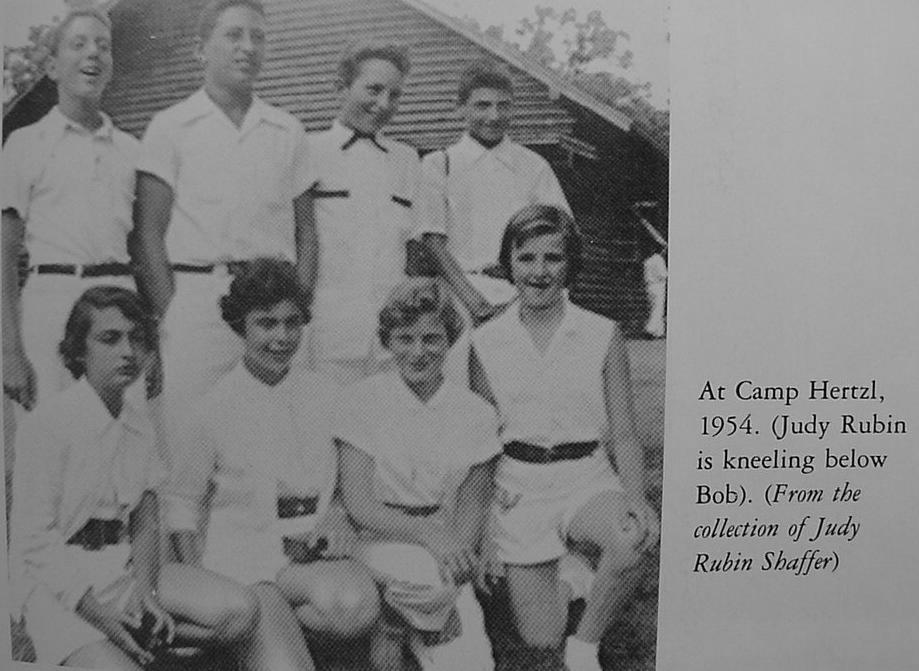
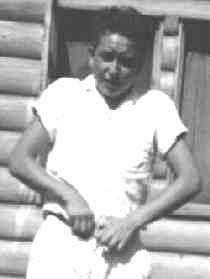 
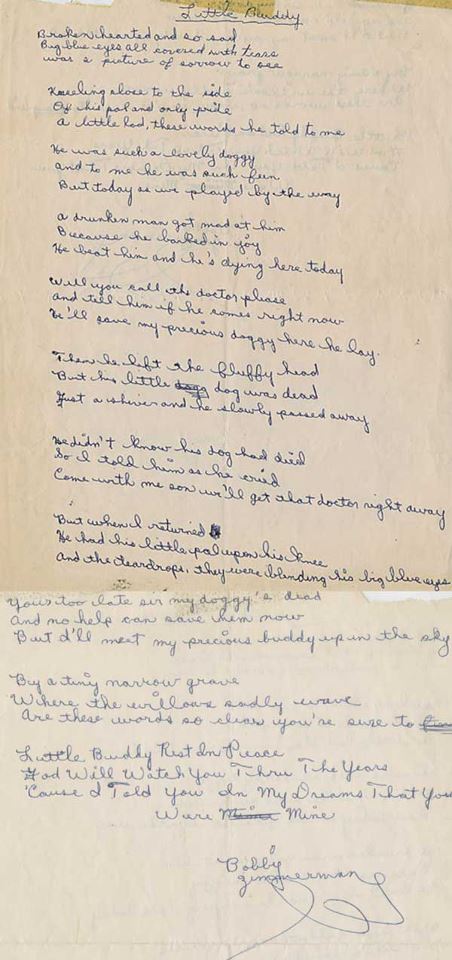

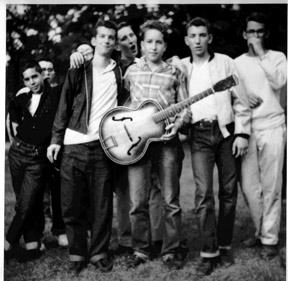
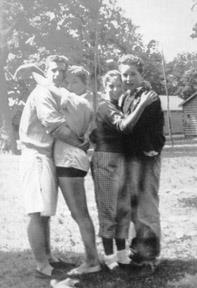
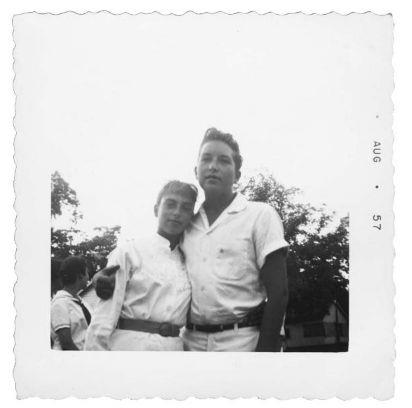 | Bob Zimmerman and Judy Rubin at Camp Herzl, 1954."Once there was Judy And she said Hi to me When no one else Could take the Time...But she broke me Up When she didn't Write back and I died for a year - Seela And then there was Ione Who wore a Ring on her Left hand...my mind went Insane Every time I saw her - Seela Then there was Carol Who had tits Like headlights On a fire engine And a face like Helen ... she'd rape my feelings ... Then there was Barbara Her parents liked me And I liked them But I loved Barbara more...Then came another Judy She had a long Pony Tail And wanted Some day To be an Actress ... Now there's Judy again And my Circe starts Over ... I don't fit in anymore I'm Lost And my trouble is I know it" Christie's auction - Poems Without Titles
Bob Zimmerman, Herzl Camp,1956.
Bob Zimmerman, Herzl Camp, 1956.
Little BuddyA hand-written poem believed at the time to be by a teenaged Bob Dylan and signed Bobby Zimmerman is seen in this undated handout photo from Christie's Auction House 19 May 2009. It was at Herzl Camp when he 'wrote' a poem in 1957 and submitted it to The Herzl Herald, the camp paper. 'Little Buddy' turned out to be a Hank Snow song. Uh-oh! ;-) Hank Snow's version of “Little Buddy”: Broken hearted and so sad, golden curls all wet with tears, And...
Broken hearted and so sad http://www.reuters.com/article/2009/05/20/us-dylan-poem-odd-idUSTRE54J64I20090520 "Little Buddy" appears to be the second known transcription Bob made of a Hank Snow song as a young man. The first was "The Drunkard's Son," a lugubrious tune with a sentiment closer to Victorian times than 19 and 47, which is when Snow originally released it on the Bluebird label. "The Drunkard's Son" (see picture below) was re-released in April 1950 on the RCA Victor label, and is very probably another 78 that Bobby Zimmerman owned. "In the summer of 1957, I was a camp counselor at Herzl. On the first day, we welcomed the campers who arrived almost exclusively by bus or car. An unusual event was the arrival of several campers on two motorcycles from Hibbing, Minnesota. One of the motorcycle campers was Robert Zimmerman, guitar slung over his shoulder, and as I recollect, the other was Louis Kemp, who wrote a recent article in Moment about his celebrity Seder with Marlon Brando. Already known as a rebel, rumor had it that Robert Zimmerman had received his motorcycle as a parental gift for agreeing to attend Herzl camp! Robert, joined occasionally by a few other campers, spent most of his time singing and playing his guitar and not participating in most organized camp activies. According to my recollection it was especially hard to get him to participate in athletics. Despite being a teenager and camp rebel, he was an intelligent and friendly kid who was well-liked by his fellow campers and counselors. He remained friendly with my brother David, who also attended camp that summer, and occasionally through the years, stopped in at his bookstore, The Hungry Mind, on Grand Avenue in St. Paul, Minnesota. My enduring memory of Bob Dylan from that summer is of a young man sitting on the roof of one of the cabins, strumming on a guitar and singing loudly with his characteristic high-pitched nasal twang." -- Joel Unowsky, Gaithersburg http://www.shmoozenet.com/yudel/mtarchives/cat_bob_dylan_tangled_up_in_jews.html
The Drunkard's SonIn 1993 the Dylan fanzine Isis had published the text of a ‘poem’, written in Bob Zimmerman’s own hand, the original of which had been posted by an unnamed hand to the fanzine’s editor, Derek Barker. This ‘poem’ was a mournful tale narrated as if by a scared boy in hiding to avoid being beaten by his drunkard father. Five issues later, reader John Roberts wrote in to say that he had found an album on the cheap RCA Camden label, dated 1962, titled The One and Only Hank Snow, and risked wasting his 75p on this unknown music because of its inclusion of a song, credited to Hank Snow's original name, Clarence E. Snow, titled ‘The Drunkard’s Son’ and handily summarised in the sleeve notes as ‘the mournful tale of a scared boy in hiding to avoid being beaten by his drunkard father.’ Yes indeed. As Roberts nicely observes, if the ‘Zimmerman Transcript’ is authentic, which now seems established, it is a ‘truly unique document—the first evidence we have of Bob’s plagiarism!’ Ironically, it’s an example of Snow’s plagiarism, too. Look back at the Jimmie Rodgers catalogue, and there, recorded in Atlanta in 1929, is Rodgers’ ‘A Drunkard’s Child’. Perhaps it was still in Hank Snow’s repertoire when Dylan, in his youth, was in the audience for his show at the Veterans Memorial Building, Hibbing. Dylan mentions this in Chronicles Volume One—and a few pages later writes that before he encountered Woody Guthrie, when Hank Williams had been his ‘favorite songwriter’, Hank Snow had been ‘a close second’. http://www.bobdylanroots.com/drunk.html
Bob Zimmerman, Camp Herzl, 1957. L-R: Larry Kegan (dark jacket), Jerry Waldman (singing), Bob Zimmerman, Louie Kemp, David Unowsky. A recording of Bob Zimmerman was made earlier than this in a custom recording facility in the Terlinde Music Shop in St. Paul, Minnesota, on Christmas Eve, 1956! He and two friends from summer camp, Larry Kegan and Howard Rutman, are all aged 15; Bob is on piano and shares vocals with the others as they race through incomplete versions of eight songs in little more than nine minutes. The songs are: ‘Let the Good Times Roll’ (an R&B million-selling instant classic that year by Shirley & Lee: a record that’s been giving pleasure ever since), ‘Boppin’ the Blues’ (a small hit by Carl Perkins, also 1956), an unidentified song with almost no lyric beyond the phrase ‘Won’t you be my girl?’, ‘Lawdy Miss Clawdy’ (Lloyd Price’s first record and first hit, and one of the earliest black R&B records to cross over into the white markets and so to help shape rock’n’roll), ‘Ready Teddy’ (a 1956 Little Richard hit), ‘Confidential’ (a hit by Sonny Knight—a song Dylan would revisit on the Basement Tapes in 1967, live in Helsinki on May 30, 1989 and in the first two of his unusual four-set gig at Toad’s Place, New Haven, CT, on January 12, 1990), ‘In the Still of the Night’ (an R&B ballad by the Five Satins, also a hit the first time around in 1956, and often named as one of the most beautiful such records ever made) and ‘Earth Angel’ (a 2- million-seller by the Penguins from 1954). Clearly, one of Bob’s main musical enthusiasms at the time was for doo-wop. In June 1986, with Tom Petty & The Heartbreakers, the night after he’d played Minneapolis, he performed ‘Let the Good Times Roll’ in East Troy, Wisconsin, introducing it thus: ‘This is pretty old. I used to play this when I was twelve years old. And this is a song that got me booed off my first stages. It was a different band, but it sort of went the same way.’ "When Bob traveled down to St. Paul he stayed with the parents of his new friends. Howard Rutman's family had a piano in their basement. "He would bang the shit out of the piano," says Rutman. "He would get up there and dance on the damn thing.... Ah God, he just ruined it." They went driving and parked in front of the house to talk late into the night, whiling away time until their favorite radio program, Lucretia the Werewolf, came on. "We were a real close-knit group," says Rutman, who recalls discussing big subjects like war and man's inhumanity to man. Still, Bob stayed very much to himself. "A great deal he kept to himself because he was a very, very inward type," says Rutman. "He's always been that way." Music was Bob's preferred form of expression. In everyday life he was a quiet kid. When he sang and played music he became somebody else altogether, a complete extrovert. He also lost himself in films." Sounes, Howard. Down the Highway: The Life of Bob Dylan. New York: Grove Press, 2001, 0802116868, pages 46-47 _________________________ Howard Rutman’s father Harvey was first cousin to, and best friend of, the Joseph Rutman who eventually married Beatty Zimmerman, many many years after their first spouses had died. So Howard and Bob, decades down the road from their teenage comradeship, have ended up related by marriage. "Louis Kemp [1941? - ] has been an almost life-long friend of Bob Dylan’s, since first meeting him at a Jewish co-educational summer camp, Camp Herzl, which they both attended annually in the mid-1950s. Louis inherited the long-established family business of A. Kemp Fisheries Inc., based at 4832 West Superior Street, Duluth, which had been founded in 1930 by Aron and Abe Kemp, who started taking Lake Superior fish to the Chicago markets. It’s a company whose relationship with Swedish and Finnish fishermen goes back a long way. There’s a statue to the memory of these men on the shore at Green Point, just north of Thunder Bay, erected in 1990 on the 100th anniversary of their trading. ‘The Finns of Green Point would sell their fish to Kemp Fisheries located in Duluth,’ noted Mike Roinila in a 1997 article, ‘and over the years a trusting and lasting association was formed between the fishermen and the American seller. . . . [And] when an unexpected thaw one winter left the fishermen with no way to keep their harvest frozen, Kemp Fisheries rented out the Port Arthur arena to freeze the fish and preserve them for market.’ Today’s marine traffic is mostly boats used by the owners of the shoreline cottages—Green Point’s last commercial fisherman retired in 1990—but A. Kemp Fisheries survived. Louis Kemp took over in 1967, expanded into Alaska and re-named it Louis Kemp Fisheries in 1986, and has since seen it taken over and moved. It was taken over first by Tyson Seafood (1992) and then by Bumble Bee (1999). Bumble Bee is a subsidiary of International Home Foods, which was itself taken over in 2000 by ConAgra Foods, which moved production from Duluth to Motley, Minnesota. Its official address is now in Downer’s Grove, Illinois. They mostly turn North Pacific white fish pulp into imitation shellfish (surimi), and Louis Kemp has become a registered trade mark; you can buy Louis Kemp Crab Delights in Chunk Style, Flake Style, Leg Style or Easy Shreds; Lobster Delights Salad Style, and Scallop Delights Bay Style. Kemp was among the entourage on Dylan and The Band’s 1974 ‘comeback’ tour, and with Barry Imhoff was tour manager on the Rolling Thunder Revues—on which, SAM SHEPARD noted, he showed ‘a remarkable gift for being able to speak words without moving his mouth,’ and also ‘managed to buy a 1934 Packard coupe´’. At The Band’s so-called ‘Farewell Concert’ dinner in San Francisco on November 25, 1976, Kemp Fisheries supplied the smoked salmon. It was even through his fisheries that he became a friend of Marlon Brando’s, and duly brought Brando and Dylan together for a very different kind of meal. As his own account of 2005 explains it: ‘I got to know Marlon about thirty years ago through a mutual friend. His son, Christian, came to work for me in fisheries I owned in Alaska and Minnesota. . . . One of my visits to Los Angeles coincided with Passover. I was not yet Orthodox and made plans to attend a seder at a local synagogue with my sister. Marlon called me that very day and invited me out to dinner. I graciously declined, explaining that it was Passover and I was going to a seder. Marlon became audibly excited over the phone and said, ‘‘Passover— I’ve always wanted to attend a seder. Can I come with?’’ He had made me an offer I couldn’t refuse. . . . A short time later, Marlon called me back and asked if he could bring a friend. I said, yes, by all means. . . . I called the shul again. They were a little less patient this time and begrudgingly told me that they could squeeze one more person in, but this was absolutely the last one as they were now officially sold out. ‘Still later that day, I received a phone call from a childhood friend of mine who had become a well-known singer/songwriter. . . . he asked if he and his wife could go along. The shul was unhappy . . . but somehow I softened the heart of the receptionist and she agreed to let my people go—to the seder. ‘I will never forget the sight of our table in the synagogue, Marlon Brando was to my left and David Kemper sitting next to him was his guest. This was during the height of Marlon’s involvement with Native American causes and he had brought with him noted Indian activist Dennis Banks of Wounded Knee fame. Banks was dressed in full Indian regalia: buckskin tassles on his clothes and long braids hanging down from a headband, which sported a feather. My childhood friend Bob Dylan sat to my right, joined by his wife, my sister Sharon, and other friends. . . . After about forty-five minutes, the rabbi figured out that ours was not your average seder table. ‘‘Mr. Brando, would you please do us the honor of reading the next passage from the hagaddah,’’ he said. Marlon said, ‘‘It would be my pleasure.’’ ‘He smiled broadly, stood up and delivered the passage from the hagaddah as if he were reading Shakespeare on Broadway. Mouths fell open and eyes focused on the speaker with an intensity any rabbi would covet. When he was done I think people actually paused, wondering if they should applaud. ‘Somewhat later the rabbi approached another member of our table. ‘‘Mr. Dylan, would you do us the honor of singing us a song?’’ The rabbi pulled out an acoustic guitar. . . . Much to my surprise Bob said yes and performed an impromptu rendition of ‘‘Blowin’ in the Wind’’ to the stunned shul of about 300 seder guests. . . . Needless to say, everyone was both shocked and thrilled by this unusual Hollywood-style Passover miracle.’ But Louis Kemp seems always to have remained important at least in part because of his preshowbiz credentials with Dylan. ROBERT SHELTON reported that it was with Kemp, in September 1974, that Dylan ‘revisited Highway 61, touring the North Country . . . [and] showing his oldest children where he’d grown up’." Gray, Michael. The Bob Dylan Encyclopedia. New York: Continuum, 2006, 0826469337, pages 375-376. Larry Kegan on left, Bob Zimmerman on the right, Camp Herzl, 1957.
Rosanne Tenenbaum and Bob Zimmerman, Camp Herzl, August 1957. |